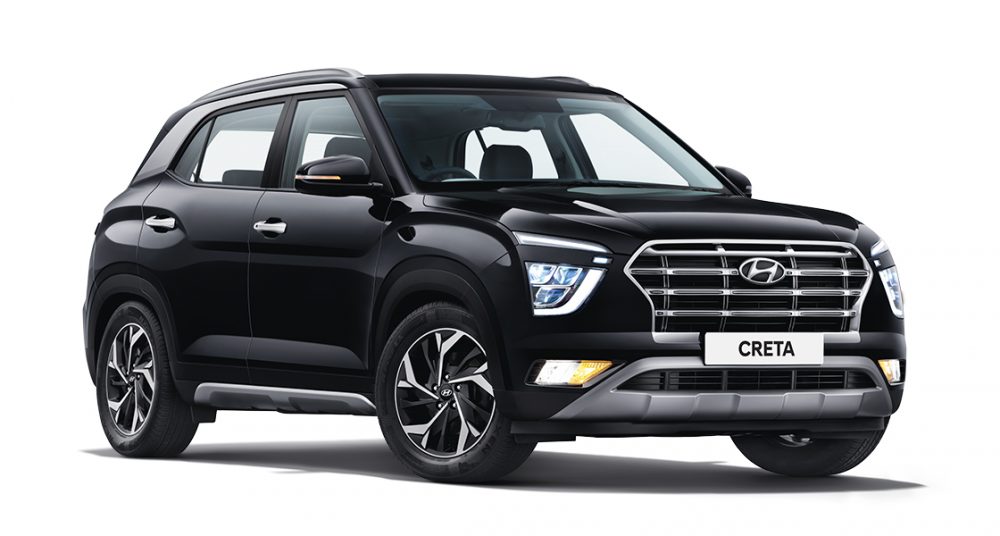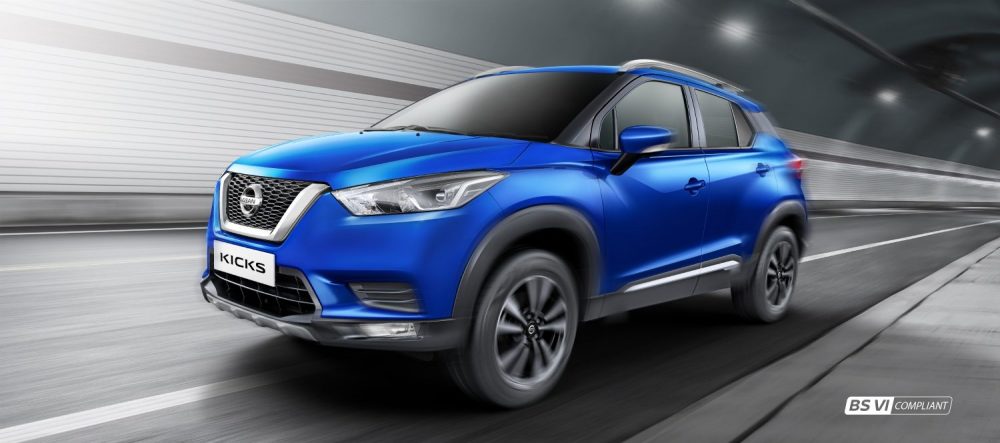The Duster has always been reminiscent of Renault India’s success. When launched in 2012, it was the car that instigated the now blazing segment of compact SUVs. It offered utility vehicle credentials with a strong underpinning at a price point that was never seen before in the Indian market.
Renault Duster’s highly capable 1.5-litre diesel engine had a significant contribution to its success story in India. That motor had a lot of punch on offer. That’s right, “had”. Sadly with the advent of BS6, Renault has discontinued the renowned 1.5-litre diesel engine in 2020.

With most major car manufacturers in India pulling the spotlight away from their diesel motors and redirecting their attention on advanced petrol engines, Renault is also heading down the same path. Renault is all set to launch the Duster Turbo powered by a 1.3-litre turbo petrol engine. This variant of the Duster and the new engine was recently unveiled at the 2020 Auto Expo. The engine produces 153 bhp and 250Nm of torque and will come mated to a 6-speed manual transmission and an optional CVT automatic transmission as well.

However, the Duster Turbo will be a bit late to the party as all the other major manufacturers already have their updated turbo petrol-powered SUVs on the dealership floors. So today, we take a look at how the Duster’s all-new turbocharged petrol motor will stack against its potential rivals. Will it be able to make its mark alongside all the new-age SUVs once it is launched? Let’s find out.
Renault Duster Turbo vs Hyundai Creta Turbo vs Kia Seltos GT line

The reason we put both the Creta and the Seltos in the same section is that both of them share the same 1.4-litre turbo-petrol engine making a 140 bhp and 242Nm of torque. The only difference is that the Hyundai Creta comes only with a 7-speed DCT transmission option while the Kia Seltos also comes with an option of 6-speed manual transmission in the turbo petrol variant along with the DCT.
Renault Duster, Hyundai Creta, and Kia Seltos | Engine Specs Comparison
| Renault Duster Turbo | Hyundai Creta Turbo | Kia Seltos GT line | |
| Engine | 1.3-litre, four-cylinder, turbocharged, petrol engine | 1.4-litre, four-cylinder turbocharged, petrol engine | 1.4-litre, four-cylinder turbocharged, petrol engine |
| Power | 153 bhp | 140 bhp | 140 bhp |
| Torque | 250Nm | 242Nm | 242Nm |
| Transmission | 6-speed MT and optional CVT | 7-speed DCT | 7-speed DCT and 6-speed MT |
Comparing the power figures of these three cars, the Renault Duster makes 13 bhp and 8Nm more than the Hyundai Creta and the Kia Seltos. So in that space, the Duster surpasses both the South-Korean cousins.

However, one key area in which the Hyundai Creta and the Kia Seltos lead the pack is the plethora of features both these cars have on offer. The Duster which is currently on sale lacks the new-age charm as far as features and the overall cabin experience is concerned.
The prices for both the Hyundai Creta Turbo and the Kia Seltos GT line are close to the 20 Lakh mark. On the other hand, the Renault Duster Turbo is expected to be priced around Rs.13 Lakh ex-showroom New-Delhi.
For someone looking to buy a car in this segment, they will probably have a close debate if spending the extra premium for the Creta or the Seltos be worth it if Renault is able able to upgrade the features list with the new Duster.
Tata Nexon

Nexon has emerged as one the most popular and also amongst the top-selling cars of the compact SUV segment. The package it has on offer at its price point is nifty. The BS6 updated Tata Nexon comes with a 1.2-litre Revotron turbo-petrol engine. It makes 118 bhp and 170Nm of torque mated to a 6-speed manual and 6-speed AMT transmission.
Renault Duster turbo and Tata Nexon | Engine Specs comparison
| Renault Duster Turbo | Tata Nexon | |
| Engine | 1.3-litre, four-cylinder, turbocharged, petrol engine | 1.2-litre, three-cylinder, turbocharged, petrol engine |
| Power | 153 bhp | 118 bhp |
| Torque | 250Nm | 170 Nm |
| Transmission | 6-speed MT and optional CVT | 6-speed MT and 6-speed AMT |
Compared to the Nexon, the Duster’s power figures are miles ahead. Considering that the top-spec trims of the Nexon and the Duster Turbo could end up at the same price point and if you are someone for whom performance is a priority, then you’ll probably place your bets at the new Duster.
Nissan Kicks (Turbo Variant)

Now, this could probably turn into a family feud since the Kicks and the Duster are cut from the same cloth. Both the cars are built on Renault’s B-platform. The BS6 updated 1.3-litre turbo-petrol engine on the kicks is the same as the one which is to be launched in the new Duster.
Renault Duster Turbo and Nissan Kicks Turbo | engine specs comparison
| Renault Duster Turbo | Nissan Kicks | |
| Engine | 1.3-litre, four-cylinder, turbocharged, petrol engine | 1.3-litre, four-cylinder, turbocharged, petrol engine |
| Power | 153 bhp | 153 bhp |
| Torque | 250Nm | 253Nm |
| Transmission | 6-speed MT and optional CVT | 6-speed MT and 6-speed CVT |
The Nissan Kicks is already not doing so hot on the sales chart. So if the Duster (with greater popularity amongst buyers) comes with a similar powertrain, then the Duster could probably make things worse of the Kicks.
Mahindra XUV300

Another compact SUV which showcased its all-new BS6 turbo-petrol powertrain at the 2020 Auto Expo was the Mahindra XUV300. Mahindra showcased the turbo-petrol engine in the XUV300 by unveiling a new variant known as the Turbo Sportz. However, this engine is now available across the range in the XUV300. It is a 1.2-litre T-GDI petrol engine making a 110 bhp and 200Nm of torque mated to a 6-speed manual transmission only.
Renault Duster Turbo and Mahindra XUV300 | Engine Specs Comparison
| Renault Duster Turbo | Mahindra XUV300 | |
| Engine | 1.3-litre, four-cylinder, turbocharged, petrol engine | 1.2-litre, three-cylinder, turbocharged, petrol engine |
| Power | 153 bhp | 110 bhp |
| Torque | 250Nm | 200 Nm |
| Transmission | 6-speed MT and optional CVT | 6-speed MT |
The power figures on the Duster seems to have the edge here as well. Also, the XUV300 comes only with a manual transmission, which is another shortcoming for the car against the Duster.
However, The XUV300 is a popular car of the segment and has been doing good numbers for Mahindra. In order to beat the XUV300, Renault needs to deliver a strong package with the Duster.
Hyundai Venue

South-Korean Car Maker Hyundai recently launched its first sub-compact SUV with the first-ever iMT transmission in the Indian market. This transmission features only in the turbo-petrol variants of the Venue. The 1.0-litre, T-GDI petrol engine already came mated to a 6-speed manual transmission and a 7-speed DCT automatic transmission. So in totality, the turbo-petrol variant of the Venue comes with three different options of transmission. This indeed makes for a strong package by Hyundai in the shape of the Venue.
Renault Duster Turbo and Hyundai Venue | Engine-Specs comparison
| Renault Duster Turbo | Venue Turbo | |
| Engine | 1.3-litre, four-cylinder, turbocharged, petrol engine | 1.0 Litre, 3-cylinder, Turbocharged, petrol engine |
| Power | 153 bhp | 120 bhp |
| Torque | 250Nm | 172Nm |
| Transmission | 6-speed MT and optional CVT | 6-speed MT, 7-speed DCT and 6-speed iMT |
The power figures of the Venue’s turbo-petrol variant are right up there with its immediate rivals like the XUV300 and Tata Nexon. However, these are still much less than what the new Duster will have on offer. Also, the Venue significantly smaller than the Duster.
The on-road prices of the top-spec trims of the Venue are in the range of somewhere between Rs. 11.46 Lakhs – Rs. 13.63 Lakhs. The Duster Turbo is also expected to fall under the price category.
Technically there can’t be a direct comparison between these two cars as the Duster has a more sturdy character while the Venue is more a city-driving oriented car. But the clashing price points do make for a valid reason to pit these two against each other.
The Renault Duster Turbo is expected to launch in mid-August 2020 and it will be very interesting to see the Indian car market’s reaction to the new Duster in comparison to the rest of the competition.






